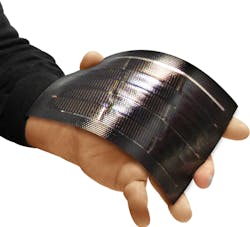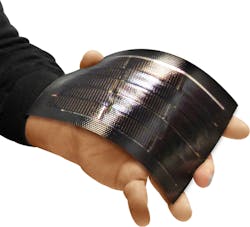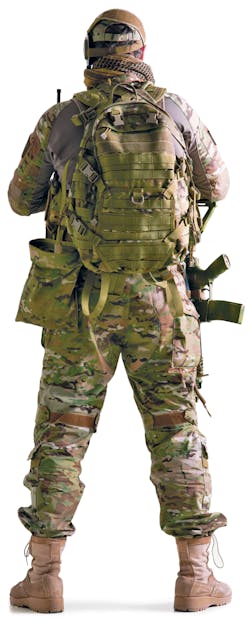The race for wireless-charging solutions has begun. Although such solutions are desired by consumers for their convenience, the military segment is where they will have the most profound effects. According to the US Army Research Laboratory (ARL), a soldier’s load can weigh 100 lbs.—over a third of which is batteries. Alta Devices claims that its highly flexible technology can reduce that battery weight by 70%, saving approximately 25 lbs. of pack weight (Fig. 1).
1. Based on solar cells, a series of flexible charging mats promise to make wireless charging possible for many applications.
The company just unveiled reference designs for its military charging mats (Fig. 2). The 10-W charging mat, which weighs 4.1 oz., measures 10 x 11 in. when it is unfolded and 10 x 5.5 in. when it is closed. The 20-W mat measures 10 x 23 in. when open and 8 x 10 in. when closed. It weighs 10 oz. and generates up to 120 W-hrs. (Wh) energy per day. The 10-W mat can produce as much as 60 Wh/day in strong solar climates. According to Alta Devices, a typical dismounted soldier can be fully self-powered from a 20- to 30-W mat.
2. For soldiers on the ground, wireless charging mats like the one shown can greatly reduce the weight of their packs by an estimated 70%.
Each design includes specifications on size, weight, and power generated in various conditions. The designs are compliant to MIL-810-G specifications for temperature, humidity, shock, and other environmental stresses. The mats can be married to any type of battery-charging connector.
Given the myriad opportunities for wireless charging, the technology that makes these military chargers possible also will be introduced in unmanned systems, consumer electronics, automobiles, and a variety of industrial, remote-power applications. To give several examples, Alta’s mobile power technology can be used by the following: manufacturers of unmanned aerial vehicles (UAVs) to increase flight times; industrial suppliers in the mining and exploration markets to provide remote power; and consumer-electronics makers to minimize the need to recharge. The automotive industry also will take advantage of wireless charging to provide supplemental power or increase range in vehicles of all types.
About the Author

Nancy Friedrich
RF Product Marketing Manager for Aerospace Defense, Keysight Technologies
Nancy Friedrich is RF Product Marketing Manager for Aerospace Defense at Keysight Technologies. Nancy Friedrich started a career in engineering media about two decades ago with a stint editing copy and writing news for Electronic Design. A few years later, she began writing full time as technology editor at Wireless Systems Design. In 2005, Nancy was named editor-in-chief of Microwaves & RF, a position she held (along with other positions as group content head) until 2018. Nancy then moved to a position at UBM, where she was editor-in-chief of Design News and content director for tradeshows including DesignCon, ESC, and the Smart Manufacturing shows.


